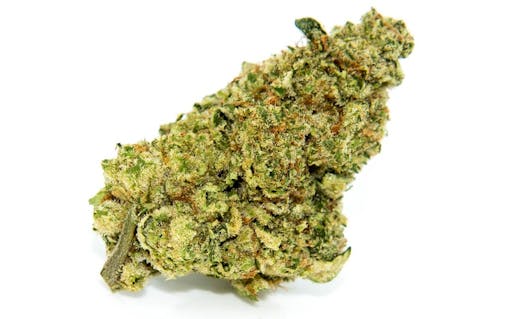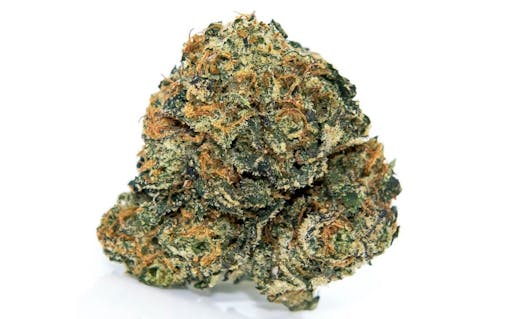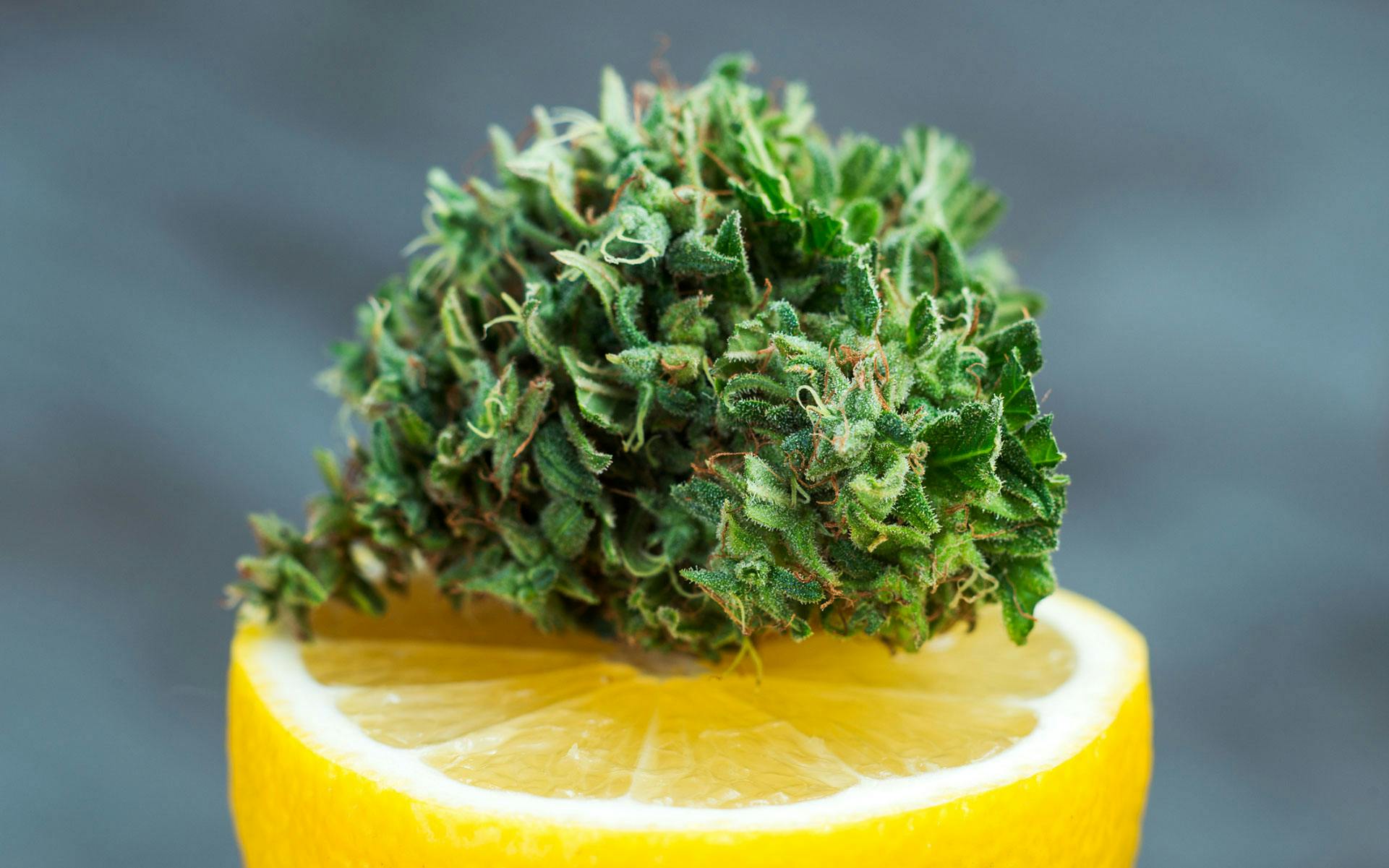If you’ve ever had the experience of smoking a 14% THC flower and getting higher than something with twice its cannabinoid concentration, you’ve experienced the power of the entourage effect and cannabis terpenes.
Terpenes are the aromatic compounds responsible for the diverse scents and flavors expressed in cannabis. But terpenes do a lot more than smell awesome—they also shape the unique effects of cannabis strains by interfacing with the human body in some very interesting ways.
Hunting for strong-smelling strains?As consumers gain education about the plant and learn how to shop the science rather than the numbers and names, the market will demand a higher level of transparency as to what exactly is in those flowers at the local shop.
Let’s take a look at some cultivars rich in several primary and secondary terpenes—all of which are staples to dispensaries Oregon-wide—as well as some examples of outliers and anomalies that illustrate a few important lessons about terp expression.
Dutch Treat: Terpinolene

Dutch Treat by Liontree Farms (Matt Stangel for Leafly)
Grown by: Liontree Farms
Dominant terpenes: Terpinolene (2.6%); myrcene (1.5%)
Find Dutch Treat Near You
Whenever a flower smells like bubblegum, cotton candy, or just about any confection bearing an artificial pink color, I know which terpene is dominant before even glancing at a lab report: terpinolene, the mood-enhancing aromatic compound that’s hallmark to strains like Durban Poison, Ghost Train Haze, and Lemon Meringue. Those, as well as Liontree Farm’s Dutch Treat.
As grown by Liontree on the sungrown operation’s south-facing slope—in a manner embraced by winemakers for upwards of a century—the Dutch Treat possesses an aromatic potency that’s more akin to extracts and concentrates than flower: 2.6% terpinolene, 1.5% myrcene, as well as a full point of ocimene; plus others, adding up to 6.1% total terpenes.
Of course, Liontree is believed to hold the state’s record for highest terpene concentration with their 11.2% Lemon Head that contained a full 8 points of myrcene. These guys are absolutely the sungrown terp leaders that you need to watch out for, and their Dutch Treat is your terpinolene fix to the max.
Kurple Fantasy: Limonene

Kurple Fantasy grown by Deschutes Growery (Matt Stangel for Leafly)
Grown by: Deschutes Growery
Dominant terpenes: Limonene (0.75%)
Find Kurple Fantasy Near You
While mood-enhancing limonene is identifiable in countless citrus-forward strains, it contributes to a host of tart and sour aromas in cannabis, many of which don’t smell like citrus in the traditional sense. Deschutes’ Kurple Fantasy possesses such a limonene-dominant-but-not-fruity aroma.
In this cross of OG Kush and Old Man Purps, a limonene primary comes together with secondary concentrations of linalool and caryophyllene for a classic Purps facade. Significant concentrations of pinene, endo-fenchyl alcohol, and humulene add competing noise, highlighting the linalool and caryophyllene while downplaying the limonene. The result is more twigs than berries: the scent taking a turn toward a woody fuel and spicy lavender, and away from its citrus numbers—a classic example of how dominant terpenes can be overpowered by their supporting entourage.
OGKB: Beta-Caryophyllene

OGKB by Gnome Grown (Matt Stangel for Leafly)
Grown by: Gnome Grown
Dominant terpenes: Beta-caryophyllene (1.4%)
Find OGKB Near You
Whenever I detect a strong, black-pepper scent in a sample, I know to suspect beta-caryophyllene as the most likely source of the tickle in my nose. As described above, beta-caryophyllene is starting to be understood as a dietary cannabinoid: it’s found in a lot of everyday foods and it interfaces with the mammalian endocannabinoid system in a manner similar to CBD—via the CB2 receptors located throughout the body.
Beta-caryophyllene is the primary scent molecule in Gnome Grown Organics’ OGKB—not surprising, given the OGKB’s Kush-family lineage and the terpenoid fingerprint common to those cultivars: often composed of near-equal caryophyllene and limonene spikes, achieving the hybridized combination of mood enhancement and pain relief characteristics that many people seek from this heavily developed branch of the cannabis genome.
RudeBoi OG: Myrcene

RudeBoi OG grown by Evan’s Creek Farms (Matt Stangel for Leafly)
Grown by: Evan’s Creek Farms
Dominant terpenes: Myrcene (0.5%); limonene (0.3%)
Find RudeBoi OG Near You
While I’ve come across many examples of the RudeBoi OG, Evan’s Creek Farms’ version is the only I’ve seen with a leading concentration of myrcene, a terpene known for its mood-enhancing effects but also its sleepy, sedating finish. It’s also thought to lower the human body’s blood-brain barrier for THC—which means more cannabinoids can find their way to their receptors, increasing uptake efficiency.
Experientially, myrcene acts like a psychoactive multiplier—often to belie lower THC concentrations where perceived potency is concerned. Which is absolutely the case with the 15%-THC RudeBoi OG from Evan’s Creek, where myrcene teams up with linalool and OG-lineage concentrations of caryophyllene and limonene. The complete package far exceeds average consumer expectations for a flower with a cannabinoid content in the teens: a strong, upbeat head change and prominent calming characteristics—thanks in part to the added potency for which myrcene accommodates.
Ghost Cookies: Linalool

Grown by Deschutes Growery (Matt Stangel for Leafly)
Grown by: Deschutes Growery
Dominant terpenes: Limonene (0.6%); linalool (0.4%)
Find Ghost Cookies Near You
Linalool—the primary scent molecule associated with lavender that’s been observed to contribute to euphoric sedation when paired with THC—is extremely common to the cannabis plant, yet it’s rare to see it take the lead as the primary terpene. Ghost Cookies is no exception: here, linalool is the second most concentrated terpene after limonene.
But you wouldn’t know it, as the cool, perfume-quality lavender persists from nose to burn, joining wood and earth elements with little to no olfactory evidence of the citrus base. Potent to the nose, linalool has a way of overpowering its bedfellows. Yet, if you’re a purist and want a true linalool-dominant strain, we recommend checking out the Chocolate Mint OG from Truly Oreganics—a cultivar that from time to time expresses a linalool primary and always excels as a deeply satisfying and drowsy bedtime bowl.
Zkittlez: Geranyl Acetate

Zkittlez grown by Pistil Point (Matt Stangel for Leafly)
Grown by: Pistil Point
Dominant terpenes: Geranyl acetate (1.4%); beta-caryophyllene (0.9%)
Find Zkittlez Near You
The Zkittlez from Pistil Point lends itself to an observation I’d like to share early on: as breeders refine, create, and simply accident upon new and improved cannabis genetics, terpenes once believed rare to the plant are showing up with increasing frequency and potency.
Known for its rosy, fruit-forward scent and not much else, the under-researched geranyl acetate is one such terp—accounting for nearly 1.4% of this particular Zkittlez’ total mass and taking the lead alongside noteworthy concentrations of beta-caryophyllene, limonene, linalool, and humulene.
In the past, I’ve compared this flower’s overall aroma and flavor to herbs and ingredients common to Vietnamese pho soup—lime and Thai basil, in particular—with exotic, sour rose-petal tones and spicy, ginger flare-ups. It’s delicious, speaking modestly. And it neatly illustrates the continuous evolution of the scents and flavors to be found in cannabis.
Gelato #33: Nerolidol

Gelato #33 grown by Nelson and Co. Organics (Matt Stangel for Leafly)
Grown by: Nelson & Co. Organics
Dominant terpenes: Nerolidol (0.6%); limonene (0.5%)
Find Gelato #33 Near You
While limonene is technically the dominant terpene observed in Nelson and Co.’s Gelato 33, when you consider all nerolidol isomers (cis-, beta-, and trans-) as a whole, this sedating family of terpenes takes the lead.
More to the point, the growers at Nelson and Co. see this uncommonly high nerolidol concentration across multiple strains that aren’t necessarily known for the trait—a trait that shows up batch after batch after batch. Speculating as to the cause, the growers say that nutrition is the most likely common factor—a light, seabird tea, applied conservatively.
Given that many commercial farms use a standardized nutrition plan across the entirety of a grow, it goes to follow that if you like one flower from a particular farm, there’s a good chance you’ll be equally well-served by another genetically similar cultivar from the same producer. That’s the case with Nelson and Co.: the organic indoor producer’s Gelato, Dogwalker, and Scott’s OG all test high in nerolidol, making it easy to find a reliable high.







